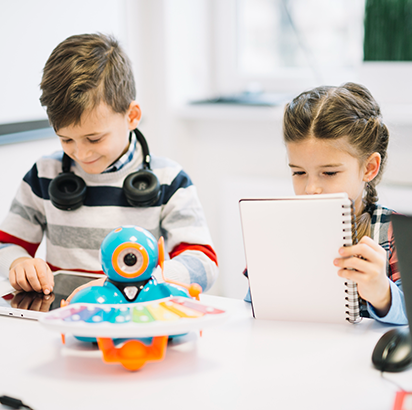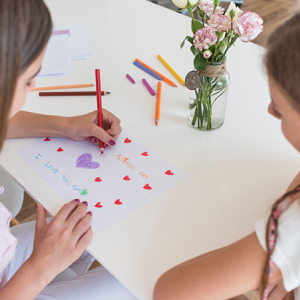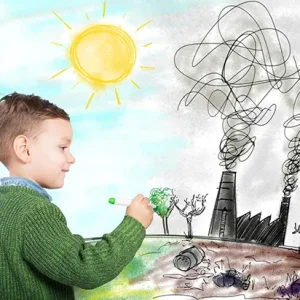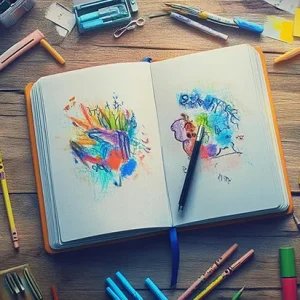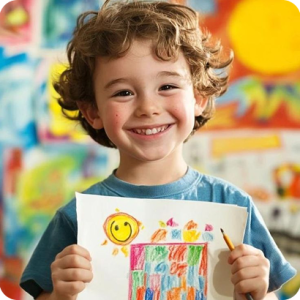Why Fun Is the Secret Ingredient in Growing Young Artists
When we think of creativity, we often picture messy paintbrushes, wild ideas, and fearless imagination. But how do we actually grow creativity in kids? Is it something they’re born with, or can it be taught?
The answer lies in how we teach — and more importantly, how kids experience the process of learning. And when it comes to art, one of the most powerful tools for nurturing creative skills isn’t rigid instruction or complex techniques. It’s play.
Playful learning — that magical blend of fun, freedom, and exploration — is the secret ingredient that helps young minds unlock their creative potential. Let’s dig into why a playful approach to art matters so much, and how it can make the difference between a frustrated child and a flourishing young artist.
Why Creativity Needs Play, Not Pressure
Children are naturally curious. They’re wired to explore, imagine, and invent. But when art becomes too structured, too serious, or too focused on “getting it right,” that natural spark can fade.
Playful learning flips that around. It removes the pressure to be perfect and replaces it with permission to experiment, laugh, and mess up. Instead of telling kids what to draw and how to draw it, playful learning says: “Let’s try this together and see what happens!”
This mindset shift is powerful. When kids feel safe to try without judgment, they take more risks — and risk-taking is essential to creative growth. They learn that mistakes aren’t failures, but stepping stones to better ideas. They discover that there’s no single way to draw a cat or color a cloud. Moreover, in that freedom, they begin to develop their own creative voice.
Making Art Memorable Through Fun
Let’s be real: most of us don’t remember the facts we memorized in school. But we do remember the times we laughed, played, and created something we were proud of.
That’s the beauty of fun in learning — it makes experiences stick. When kids are engaged in a joyful art activity, they’re more likely to remember what they learned. Not just because it was entertaining, but because they were emotionally involved. They were excited. They cared.
Playful art activities — like drawing silly monsters, creating colorful collages, or inventing new animals — keep kids motivated. They look forward to the next page. They want to keep going. That ongoing interest builds creative stamina, the ability to stick with an idea and develop it over time. And that’s a skill that benefits them far beyond the page.
Building Confidence, One Drawing at a Time
One of the most significant benefits of playful learning is how it builds self-confidence.
Many kids say, “I’m not good at art,” even before they’ve really tried. However, that’s because they’ve been taught that “good art” means “realistic art” or “perfect lines.” A playful approach throws that rulebook out the window.
In books like How To Draw: Workbook for Young Artists, author Ellie Christine Patton creates a space where kids can’t fail. Each lesson is simple, approachable, and filled with adorable cartoon characters that are easy — and fun — to draw. There’s no pressure to be perfect. The goal is to enjoy the process and feel proud of what you make.
That kind of experience rewires how kids see themselves. Instead of feeling discouraged, they feel capable. Instead of giving up, they try again. That’s how confidence grows — not from doing it “right,” but from doing it with joy.
The Long-Term Impact of Playful Creativity
The benefits of playful art making don’t stop at childhood. When kids learn to approach creative work with curiosity and confidence, they carry that mindset into other areas of life.
They learn to:
- Solve problems in innovative ways.
- Communicate visually and express emotions.
- Think outside the box and adapt to new challenges.
Whether they grow up to be artists, engineers, teachers, or entrepreneurs, those creative muscles will serve them well.
Additionally, playful art fosters emotional resilience. In a world that often values productivity over play, it’s powerful for kids to learn that joy and creativity matter. That making something just for fun is worthwhile, and that their ideas have value.
How Parents and Educators Can Support Playful Learning
If you’re a parent, teacher, or caregiver, you don’t need to be an artist to encourage creativity. All you need is the willingness to let kids explore. Here are a few simple ways to make art more playful and engaging:
- Offer open-ended prompts: Instead of “Draw a house,” try “What would a house for a dragon look like?”
- Celebrate effort, not outcome: Praise kids for trying something new, even if it’s messy or silly.
- Use fun materials: Stickers, googly eyes, neon crayons — the more playful, the better.
- Keep it light: Laugh together. Make up stories about your drawings. Let kids lead the way.
- Choose the right tools: Look for drawing books that are designed to be simple, fun, and age-appropriate — like Ellie Christine Patton’s How To Draw workbook.
Final Thoughts: Fun Is the Fuel
At the heart of creativity is joy. Moreover, joy comes easiest when kids are allowed to play, experiment, and explore without fear of failure.
A playful approach to learning — especially in art — is not just about keeping kids entertained. It’s about giving them the tools and confidence to express themselves. It’s about building a foundation that encourages imagination, self-trust, and resilience.
So the next time your child is doodling silly faces or drawing a unicorn spaceship, remember: that’s not just play. That’s learning in its most powerful form.

